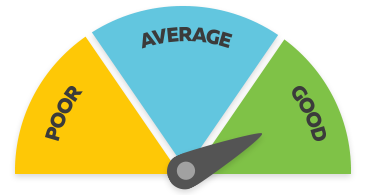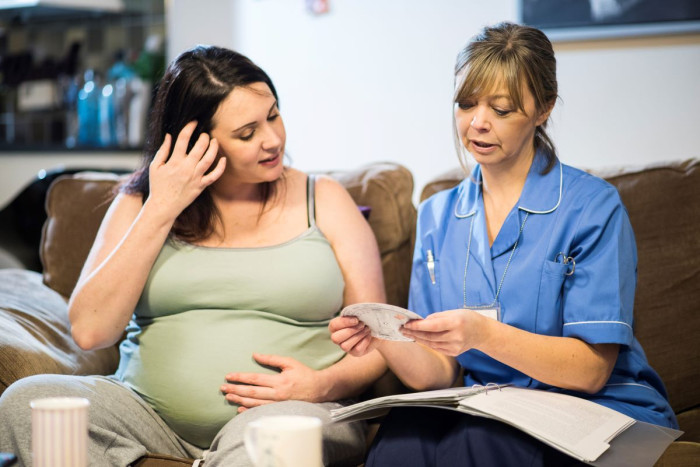Midwife
Tapuhi ā-Whare
Alternative titles for this job
Midwives provide care and support to pregnant people, their partners and family/whānau during pregnancy, labour and birth, and for six weeks following the birth.
Pay
Midwives usually earn
$77K-$111K per year
Senior midwives can earn
$102K-$153K per year
Source: Te Whatu Ora and NZNO, 2023 - 2024
Job opportunities
Pay
Pay for midwives employed by Te Whatu Ora Health NZ varies depending on their length of service, seniority, and their shift rosters.
- Registered midwives earn $77,000 to $101,000 a year. ($79,000 to $104,000 from 1 April 2024.)
- Community midwives earn $78,000 to $108,000 a year. ($80,000 to $111,000 from 1 April 2024.
- Senior designated midwives earn $102,000 to $149,000 a year. ($105,000 to $153,000 from 1 April 2024.)
Source: Te Whatu Ora, 'Te Whatu Ora - Health NZ and New Zealand Nurses Organisation, Nursing and Midwifery Collective Agreement 31 March 2023 - 31 October 2024', www.tewhatuora.govt.nz, accessed August 2023.
- Te Whatu Ora website - Te Whatu Ora and NZNO Collective Agreement 2023- 2024
- PAYE.net.nz website - use this calculator to convert pay and salary information
(This information is a guide only. Find out more about the sources of our pay information)
What you will do
Midwives may do some or all of the following:
- support women through the normal physiological processes of pregnancy and childbirth
- support women to maintain good physical, emotional and mental wellbeing throughout pregnancy
- discuss and organise ultrasound, blood and other screening tests during pregnancy
- refer to other health practitioners during the pregnancy, labour, birth and post-birth period
- care for women during labour, birth and the post-birth period, including prescribing medications
- examine the newborn baby
- provide information and support for parents on how to care for and feed their newborn baby.
Skills and knowledge
Midwives need to have knowledge of:
- anatomy and physiology of the body, particularly related to pregnancy, birth and the post-birth period
- different cultural beliefs and traditions about pregnancy and childbirth
- development of babies during pregnancy and after birth
- supporting mothers with breastfeeding
- monitoring mothers and babies in pregnancy, labour and birth, including using ultrasound equipment and heart rate monitors.
Working conditions
Midwives:
- do shift work, and may be on call for extended periods
- may work in maternity hospitals or birthing units, or in the community
- sometimes work in stressful conditions, as labour can be unpredictable.
What's the job really like?
Midwife video
Grace Hamilton- Murray talks about life as a midwife – 2.20 mins.
adrenaline. But you'll also have births where people are very quiet.
You'll have births that go really quickly so they, you know,
maybe give birth in the car park and don't quite make it inside. Hey,
my name is Grace and I'm a midwife.
A midwife is someone who looks after people who are pregnant,
helps them out with their pregnancy journey, and
delivers their baby. So this is one of our birthing rooms here at the birthing
unit. As you can see, it's got a bed and a pool.
One of the big motivations for people birthing outside of the hospital is to be
able to have a water birth.
Heat and water can have an analgesic or a pain relief effect as well.
And a lot of people choose to give birth to their babies in the water.
It's pretty special. Another thing that I do is to visit them at home after the
baby is born.
Make sure that Mum and baby are recovering and thriving after the birth. So this
is Chelsea.
She is 39-weeks pregnant and she's expecting her first
baby.
So I'm going to start with just doing her blood pressure and asking her a few questions.
I chose to become a midwife because I really liked the balance between hands-on
work and the more theoretical knowledge.
I liked the idea of having a job that would be different every day of the week.
I was quite interested in women's health,
so then I decided to do the midwifery program at AUT.
It's a 4-year programme and it's a Bachelor of Health Science in midwifery.
This career can lead you in lots of directions.
I personally am quite interested in going to do some remote rural midwifery,
and that can even be overseas. It's a really awesome job in that you can
specialise if you've got a particular interest in something like research,
or you can go into management if that's your thing.
There's roles for everyone and lots of exciting paths that midwifery can take you in.
Yeah, the most rewarding thing about my work, I think,
is being able to just go with people throughout the whole pregnancy journey.
And so being there during labour and birth is sort of a culmination of lots of
hard work from the person who's pregnant, but also from, from the midwife,
Entry requirements
To become a midwife you need to complete a Bachelor of Midwifery or a Bachelor of Health Science (Midwifery).
You also need to be registered with the Midwifery Council of New Zealand.
The Vulnerable Children Act 2014 means that if you have certain serious convictions, you can’t be employed in a role where you are responsible for, or work alone with, children.
Secondary education
NCEA Level 3 is required to enter tertiary training. Useful subjects include biology, chemistry, English, heath education, maths, and te reo Māori.
Personal requirements
Midwives need to be:
- good at managing their time
- skilled in communicating with people
- patient and caring
- able to work well under pressure
- mature and responsible
- able to remain calm during emergencies
- observant and analytical
- good at making decisions.
Useful experience
Useful experience for midwives includes:
- teaching
- counselling
- nursing
- other health-related work.
Physical requirements
Midwives need to be reasonably fit and healthy, and must have a good level of stamina, as some births may take a long time.
Registration
Midwives need to be registered with the Midwifery Council of New Zealand and have a current annual practising certificate.
Find out more about training
- Midwifery Council of New Zealand
- (04) 499 5040 - info@midwiferycouncil.health.nz - www.midwiferycouncil.health.nz
- New Zealand College of Midwives
- (03) 377 2732 - www.midwife.org.nz
What are the chances of getting a job?
Strong demand for midwives
Demand for midwives is currently high due to:
- midwives retiring and the establishment of new roles
- unpredictable demand for services as it's not possible to accurately predict when women will give birth
- a shortage of workers in Auckland, Tauranga, Canterbury and parts of Waikato.
Midwife appears on Immigration New Zealand's regional skill shortage list. This means the Government is actively encouraging skilled midwives from overseas to work in New Zealand.
According to the Census, 2,742 midwives worked in New Zealand in 2018.
Extra payment for graduates working in hard-to-staff locations
Te Whatu Ora runs a voluntary bonding scheme aimed at recruiting more graduate midwives to work in New Zealand communities that are hard to staff.
Graduates are bonded for at least three years and can receive extra payments for up to five years.
Types of employers varied
Midwives mainly work in public hospitals. However, they can work for a range of other employers, including:
- the Ministry of Health, working independently in small group practices or as part of a team providing care to a caseload of women
- private hospitals or birthing units
- education providers in training roles.
Sources
- Burrows, M, ‘Coronavirus: Midwives Leaving Their Jobs ‘in Droves’ as COVID-19 Exposes Culture of Overwork, Stress, Poor Pay’, 13 May 2020, (www.newshub.co.nz).
- Dixon, L, midwifery researcher, New Zealand College of Midwives, careers.govt.nz interview, April 2021.
- Henry, D, ‘Midwifery in ‘Crisis’ With Pregnant Women Unable to Find Lead Maternity Carers’, 20 February 2018, (www.nzherald.co.nz).
- Immigration New Zealand, 'Regional Skill Shortage List', 27 May 2019, (www.immigration.govt.nz).
- Kay, R, workforce specialist, TAS, careers.govt.nz interview, March 2021.
- Midwifery Employee Representation and Advisory Services and District Health Boards, 'Multi-Employer Collective Agreement 1 February 2018 - 31 January 2021, March 2021, (www.midwife.org.nz).
- Midwifery Council, ‘2020 Midwifery Workforce Survey’, accessed March 2021, (www.midwiferycouncil.health.nz).
- New Zealand Nurses Organisation and District Health Boards, 'Nursing and Midwifery Multi-Employer Collective Agreement', March 2021, (www.careers.adhb.govt.nz).
- Stats NZ, '2018 Census Data', 2019.
- Witton, B, ‘Safety Concerns as Nurses Fill in for Midwives on Short-Staffed Wards’, 14 April 2021, (www.stuff.co.nz).
(This information is a guide only. Find out more about the sources of our job opportunities information)
Progression and specialisations
Midwives may move into management, advisory, training or education roles in midwifery practice.
Last updated 11 December 2024


